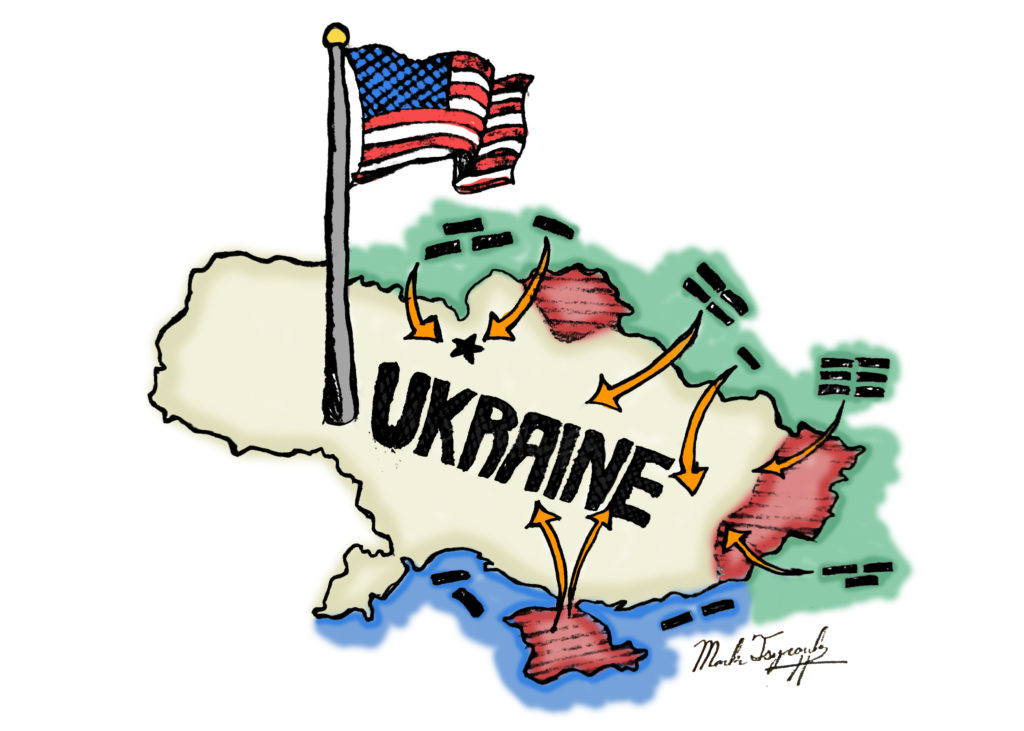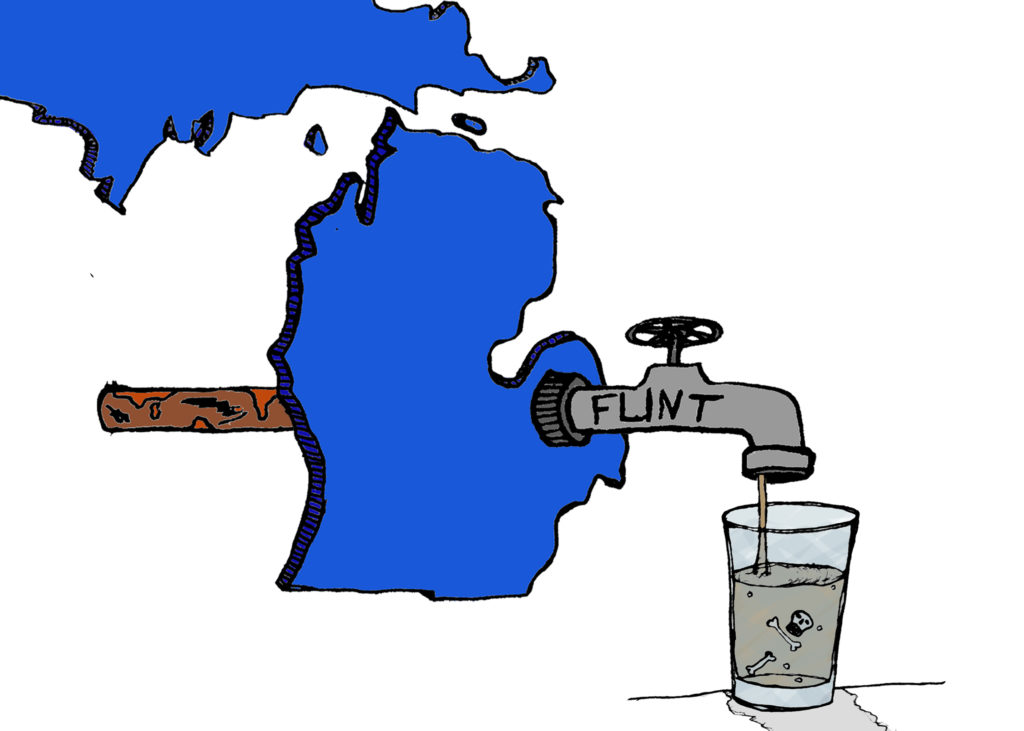With 26 percent of the nation’s GDP reliant on agricultural exports, Libya and its 1.3 million inhabitants received a break in 1958 when oil reserves were found resting under its desert territory.[1] The discovery of the natural resource was ideal because of the reserves’ volume – roughly 48 million barrels worth– and because Libya was geographically advantaged for neighboring its European consumers.[2] Since the country’s markets barely had return on investments for its workforce prior to the oil boom, many laborers changed career paths to participate in the nationalized petroleum industry and capitalize on the immense wealth.
This had an unforeseen effect on the economy. By 1978, farming had only accounted for two percent of total GDP.[3] The strong dependency on oil made the Libyan government and its leader, Muammar Gaddafi, feel the need to diversify the nation’s markets, including a revamping of its agricultural sector. However, such a task required an abundance of clean drinking water, a rare commodity even on Libya’s populated coastline. Until that point, “clean” water was usually desalinated from the Mediterranean Sea or picked up by rain aquifers.
In 1953, during a drilling operation to find oil, engineers had accidentally found undisturbed groundwater – dubbed “fossil water” – beneath a region of the Sahara Desert. To keep up with agricultural demand and allow poor residents access to clean water for drinking and bathing, the government now felt it was necessary to invest in an infrastructure project to irrigate the fossil water.
In 1984, Gaddafi ordered the construction of the “Great Man-made River Project” (GMRP), a 2,530-mile-wide aqueduct designed to flow water into Tripoli, Benghazi, and neighboring coastal cities from 1,116 inland wells.[4] The ambitious investment, nicknamed the “Eighth Wonder of the World” for its achievements in civil engineering, had an affordable price-tag of $25B USD considering its size, but was still an immense figure for Libya’s budget.[5] With a plan to have it fully financed by the government and prevent opportunities of foreign meddling, the project was initially spanned out into 5 phases over a 40-year period. As of 2020, the project is concluding Phase IV and is projected to finish in 25 years, an estimate likely influenced by the country’s recent regime change.[6]
While it is premature to approximate the long-term economic impact of GMRP, water access has certainly improved the quality of life in Libya. By the late 1980’s, the agricultural sector made a comeback among 20 percent of the labor force, thanks in part to farming subsidies provided to landowners who would use fossil water to irrigate once non-arable terrain.[7] By 2010, the government credited the aqueduct for developing up to 395,000 acres of farmland and up to 70% of the population’s drinking water.[8] As clean water becomes a growing commodity, Libya could potentially tap into a $1T USD market exporting its “product” to neighboring African nations and countries underdeveloped in irrigation infrastructure.[9]
But these new economic opportunities, while promising, are intertwined with complications. One caveat is that the fossil water is non-renewable, since the aquifer does not get replenished elsewhere. As the lifetime of the aqueduct varies between decades and millennia, it is not known whether the investment will dry up faster than its demand, especially since government figures now put the project’s price tag upward of $36B USD.[10]
The aqueduct is further threatened by political instability. Muammar Gaddafi’s 2011 assassination and the subsequent civil war that followed since 2014 has allowed the aqueduct to deteriorate, leaving over 100 wells destroyed, miles of pipeline corroded, and a pipe factory bombed by NATO interventionist forces.[11] Libyans are now firmly reliant on the infrastructure, so the project’s growing setbacks will likely stifle the country’s quality of life and economic stimulation.
Whether Libya has the resources and the institutions resilient enough to finish the world’s largest irrigation project remains to be seen. If the infrastructure sets out to exceed expectations idealized in 1984, it could transform what investors and foreign policy analysts would expect from underdeveloped nations when governments participate in their own nation-building.
Work Cited
[1] Helen Chapin Metz, ed. Libya: A Country Study. Washington: GPO for the Library of Congress, 1987.
[2] Top Ten Countries with World’s Largest Oil Reserves, from Venezuela to Iraq. 5 Apr. 2019, www.nsenergybusiness.com/features/newstop-ten-countries-with-worlds-largest-oil-reserves-5793487/.
[3] Helen Chapin Metz, ed. Libya: A Country Study. Washington: GPO for the Library of Congress, 1987.
[4] Bunta, Juraj Kotulič. “Libya’s Great Man-Made River.” Libya’s Great Man-Made River | BOINC.SK, BOINC.SK, Aug. 2010, www.boinc.sk/clanky/libyas-great-man-made-river.
[5] Interesting Engineering. “Saving Lives with a Great Man-Made River.” Interesting Engineering, Interesting Engineering, 6 Sept. 2016, interestingengineering.com/saving-lives-great-man-made-river.
[6] “GMR (Great Man-Made River) Water Supply Project.” Water Technology, Verdict Media Limited, 2020, www.water-technology.net/projects/gmr/.
[7] Helen Chapin Metz, ed. Libya: A Country Study. Washington: GPO for the Library of Congress, 1987.
[8] Topol, Sarah A. “Libya’s Qaddafi Taps ‘Fossil Water’ to Irrigate Desert Farms.” The Christian Science Monitor, The Christian Science Monitor, 23 Aug. 2010, www.csmonitor.com/World/Africa/2010/0823/Libya-s-Qaddafi-taps-fossil-water-to-irrigate-desert-farms.
[9] Chengdu, Garikai. “Water Wars in the Middle East – $1 Trillion Is at Stake.” The Ecologist, 4 June 2014, theecologist.org/2014/jun/04/water-wars-middle-east-1-trillion-stake.
[10] Ali, Moutaz. “Libya Has the World’s Largest Irrigation Project.” Physical and Social Infrastructures, Development and Cooperation, 14 May 2017, www.dandc.eu/en/article/libya-has-worlds-largest-irrigation-project.
[11] Ali, Moutaz. “Libya′s Great Man-Made River Irrigation Project: The Eighth Wonder of the World?” Qantara.de, Development and Cooperation, 7 Mar. 2017, en.qantara.de/content/libyas-great-man-made-river-irrigation-project-the-eighth-wonder-of-the-world.


